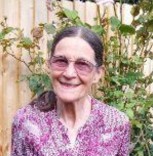Inspirations
Back to Our Stories
We asked our members about people who have inspired them to work with occupational
therapy in low and middle income countries or humanitarian contexts.
Here are their stories.
Bilan
Nominated by Anna Daniel
I met Bilan during our Band 5 rotations in an acute hospital setting. Although she was raised in the UK, her family are originally from Somaliland. The reason she inspires me? She followed a dream to improve rehabilitation opportunities for people in Somaliland.
Bilan wanted to help in a relevant, meaningful and person-centred way in the Somaliland context; she didn’t rush in but made carefully planned visits to hospital and community rehabilitation settings in Somaliland.
She took time to listen and understand the context, finding an organisation that was ready to collaborate and were focussed on supporting people in their rehabilitation. Together, they identified equipment and training needs, so Bilan spent two years fundraising towards these.
Bilan had planned to ship the equipment and visit the organisation for the first training course during 2020. Even though COVID changed her original plan, she took the opportunity to join and grow a virtual network of UK-based healthcare professionals with a Somali background who are passionate about developing healthcare services in Somaliland. They adapted to supporting the needs of the COVID response in Somaliland by increasing awareness and availability of PPE (Personal Protective Equipment).
Adjusting her original equipment shipment, Bilan included protective uniforms more suitable for use in the cultural context. She kept her dream alive and I believe will see great impact when rehabilitation is a priority for the community to recover again. She inspires me and I am so grateful for her friendship, for all it has taught me about being an OT in a truly international way.
Edited for clarity
Dr Valerie Taylor
Nominated by Koly and Syed
Nomination by Koly
I nominate Valerie Taylor, the founder and coordinator of the Centre for the Rehabilitation of the Paralysed (CRP). Her dedication and affection for people with disabilities inspired me to be an OT. When I was twelve I saw ‘Bihongo’, a Bangla movie based on the story of a tetraplegic girl, her rehabilitation in CRP and how this rehabilitation made her life change. That movie motivated me to become an occupational therapist, giving me a desire to serve people with disabilities and to work with CRP.
Nomination by Syed
The Centre for the Rehabilitation of the Paralysed (CRP) has a remarkable history of improving the lives of hundreds of thousands of the poorest and the most marginalized people in Bangladesh, people with disabilities and their families. Since CRP was established by Dr Valerie Ann Taylor in 1979, it has grown from a four-bed ward to the largest centre for rehabilitation of people with spinal cord injuries in Bangladesh. It now consists of a comprehensive rehabilitation centre in the city of Savar and twelve regional rehabilitation centres, with more than one thousand employees providing services to around 80,000 people annually. In addition to rehabilitation services, CRP promotes empowerment of disabled people through community-based services, peer support, advocacy and networking on disability issues and empowerment of disabled girls and women. CRP also raises awareness on disability issues nationally, regionally and internationally.
Dr Taylor made great personal and professional sacrifices for the sake of people with disabilities in Bangladesh. Though she was born and raised in the UK, the conditions of the physically challenged people of Bangladesh deeply touched her heart. She first came to Bangladesh as a volunteer in 1969 with the Voluntary Service Overseas (VSO). During the
liberation war in 1971 she returned to serve the injured freedom fighters; in 1975 she returned again, and established CRP four years later.
Providiong holistic rehabilitation ranging from acute hospital treatment to community reintegration for people with spinal cord injury (SCI), CRP has become a model centre for South Asian Countries. Annually more than 400 SCI patients, injured mostly in road traffic accidents and falls from height, receive comprehensive rehabilitation services from CRP. To date, CRP has rehabilitated more than 11,000 SCI patients. Most of the SCI patients who receive rehabilitation services from CRP worked as labourers prior to their injuries and come from rural areas all over Bangladesh. They are often the only breadwinner of the family and cannot afford their treatment and rehabilitation. CRP provides rehabilitation services either for free or subsidised due to donors from within Bangladesh and internationally.
Bangladesh Health Professions Institute (BHPI) is an academic institute of CRP, the only provider of occupational therapy courses in Bangladesh. Dr Taylor has great enthusiasm for developing physiotherapy, occupational therapy, speech and language therapy, orthotic and prosthetic professionals in Bangladesh. Under her guidance, the Bangladesh Rehabilitation Council (BRC) was formed and the Bangladesh Rehabilitation Council Act approved by Jatiyo Shangshad, the supreme legislative body of Bangladesh. Dr Taylor has received many national and international awards and recognition for her lifelong service provision to poor people with disabilities in Bangladesh. During the Covid-19 pandemic, CRP provided rehabilitation services for wheelchair users and others with disabilities.
Edited for clarity









